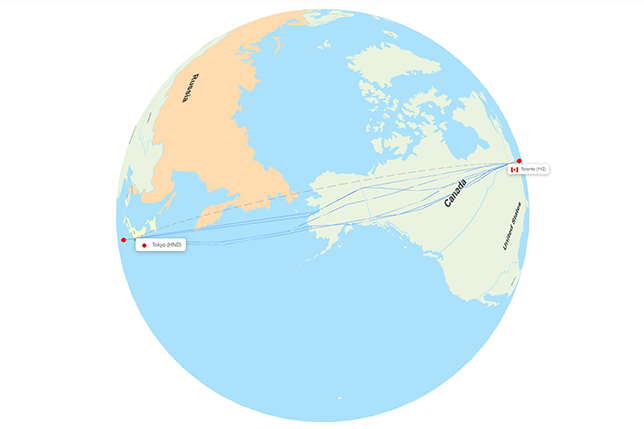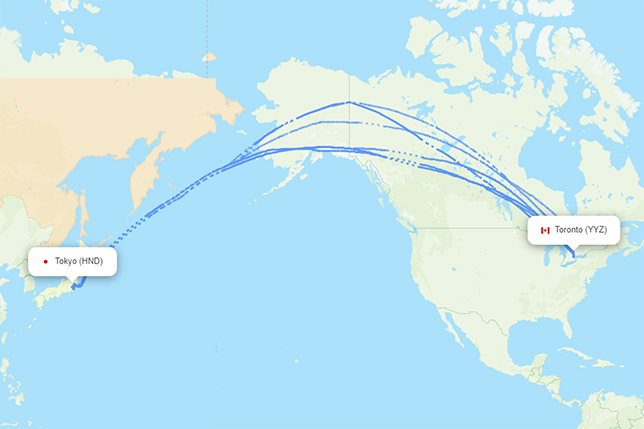Countries
- To Australia
- To Japan
- To Singapore
- To Thailand
- To the UAE
- To China
- To South Korea
- Browse all countries
- Browse all airlines
"See actual flight paths with flightpaths.com"
Weather, politics and local regulations can affect the choice of airspace and flight corridors. Flightpaths.com lets you see the real flight paths and compare passenger airlines and flight times simplified on an interactive map.




 Canada
Canada
 Japan
Japan
 Over water
Over water